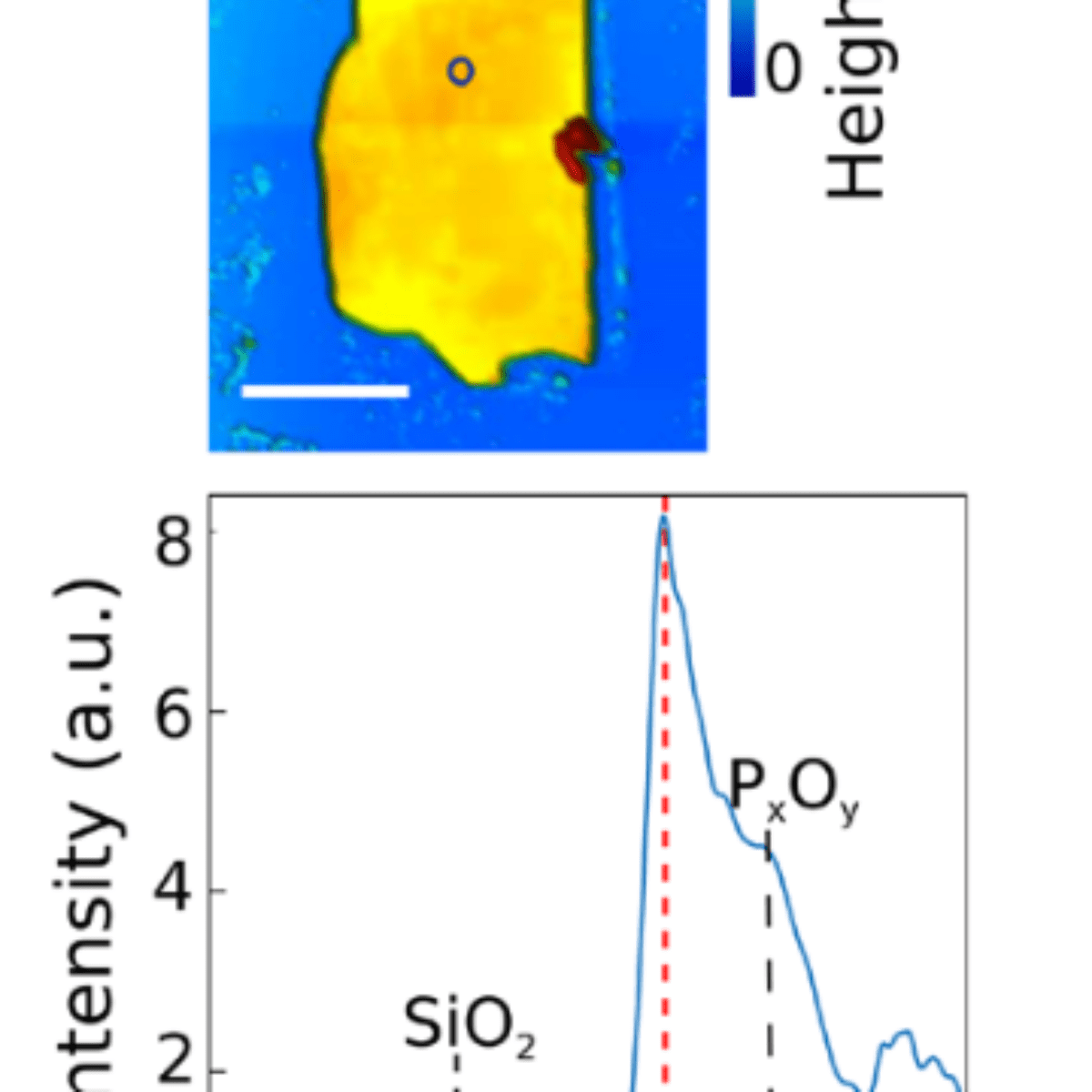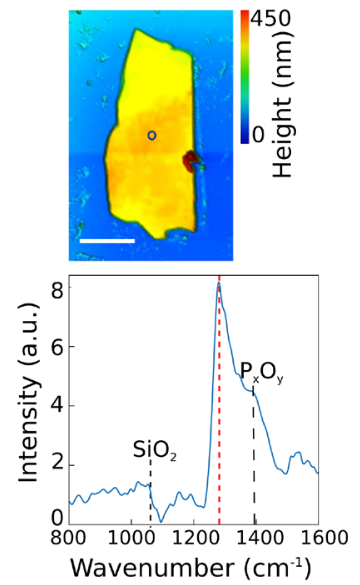
Research investigates the impact of oxidation on electronic and vibrational properties
Semiconductors are a class of materials essential for the electronics industry. They have intermediate properties between conductors and insulators, which can be modified by doping with different chemical elements or by the application of electric fields or light. Black phosphorus is a stable form of phosphorus whose crystalline structure is composed by stacking two-dimensional, one atom thick, thin layers. This material has immense potential to be used in electronic devices at the nanoscale due to its semiconductor properties, which can be adjusted by the number of atomic layers according to the need.

Morphology and nanoscale-resolved infrared spectroscopy of a BP flake exfoliated in $rm N_2$ and exposed to low $rm O_2$ concentration for 1 month. Scale bar represent $rm 5 µ m$. Spectrum obtained at the point marked with open circles. Black dashed lines represent peaks assigned to the samples; red dashed lines represent peaks attributed to tip contamination.
Despite its potential, black phosphorus is quite sensitive to the chemical environment in which it is inserted. In particular, the presence of $rm O_2$ leads to oxidation of the material and the formation of oxides, which may adversely affect its properties. However, if the oxidation of the material can be controlled, it is possible to create a protective layer of oxides over the phosphorus layer. To achieve such control, it is necessary to understand the oxidation of this kind of phosphorus under different conditions.
Therefore, Daniel Grasseschi, from the Graphene and Nanomaterials Research Center (MackGraphe), and collaborators [1] used the facilities of the Brazilian Synchrotron Light Laboratory (LNLS) to analyze samples of black phosphorus prepared and stored under different conditions, and submitted to different degrees of exposure to oxygen. The group used the LNLS’ Infrared Nanospectroscopy Beamline, one of the few facilities of its kind open to outside users worldwide.
The adsorption and dissociation of $rm O_2$ at the surface of the black phosphorus leads irreversibly to the formation of molecules with different degrees of oxidation (depending on the environment to which the material is exposed and the time of exposure) and to the alteration of the electronic and structural characteristics of the material. The formation of oxygen-rich species $rm P_x O_y$ with high oxygen content, which are insulators, compromises the semiconductor properties of black phosphorus and makes the material more susceptible to water with formation of phosphoric acid.
Therefore, according to the researchers, the controlled formation of oxides with oxidation degrees of less than $rm P_4 O_6$ should allow a better formation of protective layers and avoid the degradation of black phosphorus.
Source: D. Grasseschi, D. A. Bahamon, F. C. B. Maia, A. H. Castro Neto, R. O. Freitas and C. J. S. de Matos, Oxygen impact on the electronic and vibrational properties of black phosphorus probed by synchrotron infrared nanospectroscopy, 2D Mater. 4 035028 (2017). DOI: 10.1088/2053-1583/aa8210
Research analyzes molybdenum catalysts doped with transition metals
Research uncovers the mechanism of memory effect of lamellar double hydroxides (LDH).